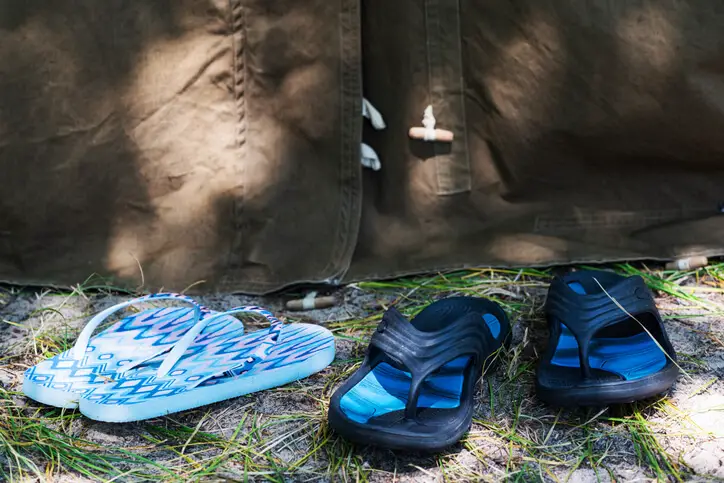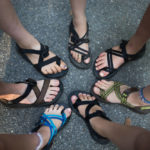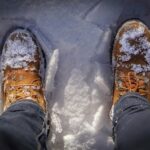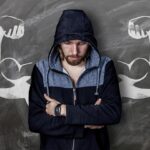Hiking is a great way to explore the outdoors, exercise, and enjoy nature. But what if you don't have the proper footwear? Many assume hiking requires sturdy, supportive shoes or boots, but some hikers prefer flip-flops. In this article, I will explore the pros and cons of hiking in flip-flops and help you decide if it's the right choice.
Hiking in flip-flops may seem strange, but it's not as uncommon as you might think. Some hikers prefer the freedom and flexibility of flip-flops, while others find them more comfortable than traditional hiking shoes. However, there are also some drawbacks to consider. In this article, I will provide all the information you need to decide whether hiking in flip-flops is right for you.
Table of Contents
Key Takeaways
Hiking in flip-flops can be a comfortable and flexible option for some hikers.
However, flip-flops lack the support and protection of traditional hiking shoes, making them less suitable for certain terrain and weather conditions.
Ultimately, the decision to hike in flip-flops should be based on personal preference and the specific demands of the trail.

The Basics of Hiking in Flip-Flops
Hiking in flip-flops can be fun and comfortable, but knowing the basics is important before hitting the trail. Here are some things to keep in mind:
Footwear
Flip-flops are not designed for hiking, so choosing the right pair is important. Look for flip-flops with good arch support and a sturdy sole. Avoid cheap, flimsy flip-flops that can easily break or cause blisters.
Trail Conditions
Before hitting the trail, check the trail conditions. Flip-flops are unsuitable for rocky or uneven terrain, as they provide little protection and can easily slip off your feet. Stick to flat, easy trails with good footing.
Hydration
Staying hydrated is important when hiking and even more important when hiking in flip-flops. Your feet will be exposed to the sun and air, which can cause them to dry out quickly. Bring plenty of water and stop frequently to rest and rehydrate.
Sun Protection
When hiking in flip-flops, protecting your feet from the sun is important. Wear sunscreen and consider wearing a hat or other protective gear to shade your feet from the sun's rays.
Pace
Hiking in flip-flops can be slower and more difficult than hiking in hiking boots or shoes. Take your time and enjoy the scenery. Don't push yourself too hard, and be prepared to take frequent breaks.
Conclusion
Hiking in flip-flops can be a fun and comfortable way to enjoy the outdoors, but taking the necessary precautions to stay safe and comfortable is important. Remember to choose the right footwear, stick to easy trails, stay hydrated, protect your feet from the sun, and take your time.

Benefits of Hiking in Flip-Flops
When it comes to hiking, most people opt for heavy-duty hiking boots or shoes. However, hiking in flip-flops is becoming increasingly popular. While it may seem unconventional, there are several benefits to hiking in flip-flops.
Comfort
One of the biggest advantages of hiking in flip-flops is the comfort they provide. Flip-flops are lightweight and allow your feet to breathe, which can help prevent blisters and other foot injuries. They also provide a more natural feel, allowing you to better connect with the trail beneath your feet.
Breathability
Flip-flops are also great for hiking in warmer weather. They allow your feet to breathe and prevent them from getting too hot and sweaty, which can lead to blisters and other foot injuries. The open design of flip-flops also allows for better air circulation, which can help keep your feet cool and dry.
Ease of Use
Another benefit of hiking in flip-flops is their ease of use. Unlike hiking boots or shoes, flip-flops are easy to slip on and off, which can be helpful when taking a quick break or crossing a stream. They also take up less space in your backpack, making them a great option for backpackers and hikers who need to pack light.
While hiking in flip-flops may not be for everyone, they offer several benefits worth considering. From their comfort and breathability to ease of use, flip-flops can be a great choice for hikers who want to experience the trail in a new way.

Drawbacks of Hiking in Flip-Flops
Regarding hiking, footwear is one of the most important considerations. While flip-flops might seem comfortable and easy, they are not always the best option for hiking. Here are some of the drawbacks of hiking in flip-flops.
Lack of Support
Flip-flops are designed for casual wear and do not offer the same support as hiking boots or shoes. They lack arch support, leading to foot pain and discomfort during a long hike. Additionally, flip-flops do not provide ankle support, which can increase the risk of rolling an ankle on uneven terrain.
Risk of Injury
Hiking in flip-flops can be risky, especially on rough or rocky terrain. The lack of support and protection can lead to injuries such as cuts, bruises, and sprains. In addition, flip-flops offer little protection against snakes, spiders, and other hazards that hikers may encounter on the trail.
Inadequate Traction
Flip-flops are not designed for hiking and do not provide adequate traction on slippery or wet surfaces. This can increase the risk of slipping and falling, especially on steep inclines or declines. In addition, flip-flops can easily become caked with mud, further reducing traction.
While flip-flops might be a comfortable and convenient choice for casual wear, they are not always the best option for hiking. When hitting the trails, choosing footwear that provides adequate support, protection, and traction is important to ensure a safe and enjoyable hiking experience.
Conclusion
In conclusion, hiking in flip-flops can be a viable option for some hikers, but it's not for everyone. It's important to weigh the pros and cons before deciding if a flip-flop hike suits you.
However, flip-flops may not be the best option if you want a continuous and traditional through-hike experience. It can be challenging to mentally and physically switch gears after completing one section of the trail and then starting another section later.
Ultimately, the decision to hike in flip-flops is a personal one that depends on your goals, preferences, and experience level. If you decide to embark on a flip-flop hike, do your research and plan accordingly to ensure a safe and enjoyable experience on the trail.
- Are Merrell Shoes Good? – An Unbiased Review of Merrell Footwear - December 9, 2023
- Where Are Merrell Shoes Made? - December 9, 2023
- Camping in 40-degree Weather: Tips and Tricks - September 25, 2023






